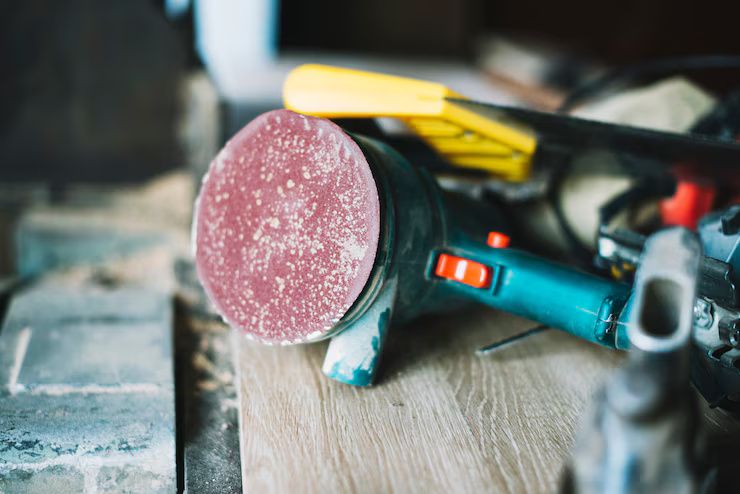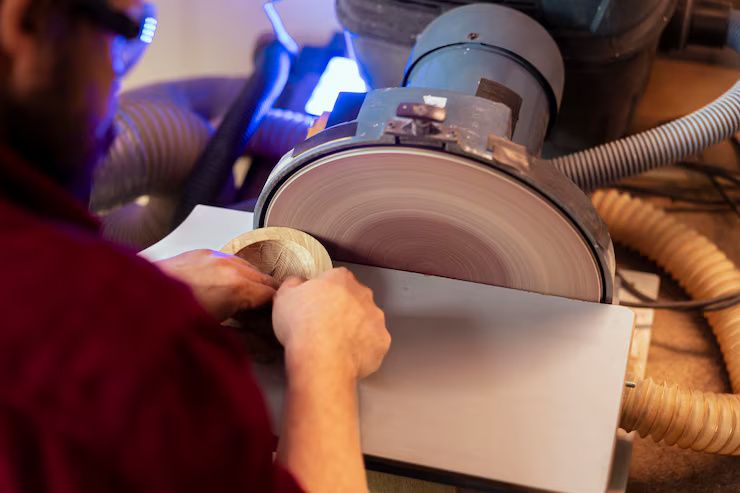A polishing machine is a mechanical tool used to smooth surfaces through friction, often using abrasive belts, wheels, or discs. These machines are widely employed in manufacturing, automotive, construction, electronics, and metalworking industries.
The process helps improve the aesthetic appeal and functional quality of materials like metal, plastic, glass, and ceramics. Whether removing scratches or preparing a surface for coating, polishing machines are integral in product finishing.

Why Polishing Machines Matter Today
Polishing machines address several modern industrial and commercial challenges:
-
Quality Assurance: Helps achieve uniform surface finishes and consistent product quality.
-
Efficiency: Reduces manual labor, speeding up finishing in production lines.
-
Safety: Smoother surfaces reduce sharp edges, improving workplace and consumer safety.
-
Durability Enhancement: Prepares surfaces for protective coatings, increasing lifespan.
-
Environmental Impact: Minimizes waste by refining existing materials instead of replacing them.
From jewelry to large automotive components, polishing machines play a critical role in almost every material-processing industry.
Recent Trends and Technological Updates (2024–2025)
The polishing machine industry has seen notable developments over the past year:
-
Automation Integration: Many industrial polishing machines now feature robotic arms or CNC integration for precision and repeatability.
-
Eco-Friendly Abrasives: Sustainable and non-toxic abrasive materials are being used to reduce environmental harm.
-
Smart Monitoring Systems: IoT-connected polishing machines provide performance data, tool wear alerts, and maintenance scheduling.
-
Noise and Vibration Control: Newer models include dampening technologies to comply with occupational safety standards.
-
Hybrid Machines: Machines now support multiple operations like grinding, deburring, and polishing in one unit.
These changes make polishing machines more adaptable and aligned with sustainable manufacturing goals.
Regulatory Guidelines and Safety Policies
Polishing machines fall under various safety, quality, and environmental regulations:
-
OSHA Guidelines (U.S.): Workplace polishing equipment must comply with standards related to guard placement, vibration levels, and dust control.
-
CE Certification (EU): Indicates conformity with health and safety standards across European nations.
-
BIS Certification (India): Mandates structural and electrical safety in industrial machinery.
-
Dust Emission Rules: Polishing creates airborne particles; industries must install dust collectors or use water-based polishing to meet air quality norms.
-
Noise Emission Standards: Certain countries restrict machinery that exceeds defined decibel limits in enclosed workspaces.
Compliance ensures safer work environments and protects users from long-term exposure risks.
Tools and Resources for Users and Professionals
Several tools and platforms can help users select and manage polishing machines more effectively:
Product Selection & Comparison
-
Thomasnet.com: Compare specifications and manufacturers of industrial polishing machines.
-
IndiaMART & Alibaba: Useful for sourcing small to large-scale polishing tools globally.
-
TechPilot: Find suppliers and partners for polishing services in Europe.
Maintenance & Operation
-
Bosch ToolBox App: Includes guides and service reminders for industrial tools.
-
Grizzly.com Maintenance Calculator: Estimates machine life based on usage hours and surface type.
Education & Support
-
YouTube (channels like NYC CNC or Practical Machinist): Step-by-step polishing machine tutorials.
-
Coursera & Udemy: Courses on surface finishing processes and manufacturing best practices.
These tools offer guidance for decision-making, usage efficiency, and technician upskilling.
Frequently Asked Questions (FAQs)
Q1. What materials can be polished using a polishing machine?
Common materials include metal (aluminum, stainless steel), wood, plastic, glass, and ceramic. Specialized pads or compounds may be needed for delicate surfaces.
Q2. Is polishing the same as buffing?
Not exactly. Polishing removes material and scratches, while buffing is typically the final process to give a mirror-like shine.
Q3. Are there different types of polishing machines?
Yes. Common types include bench polishers, angle polishers, vibratory polishers, and CNC-integrated polishing systems.
Q4. What are the safety precautions for operating a polishing machine?
Always wear protective gear (gloves, goggles, mask), secure loose clothing, and ensure guards are in place. Regular maintenance also prevents mechanical failures.
Q5. How do I know which polishing machine to use?
It depends on the material, desired finish, production scale, and available workspace. For example, jewelry polishing may need handheld units, while auto parts require heavy-duty industrial machines.
Final Thoughts
Polishing machines play a crucial role in modern manufacturing by improving surface finish, safety, and product appeal. With advancements in automation, energy efficiency, and safety, these machines continue to evolve.
Understanding the different types, usage contexts, and regulations helps both industrial professionals and small business owners make informed decisions when investing in polishing equipment.
